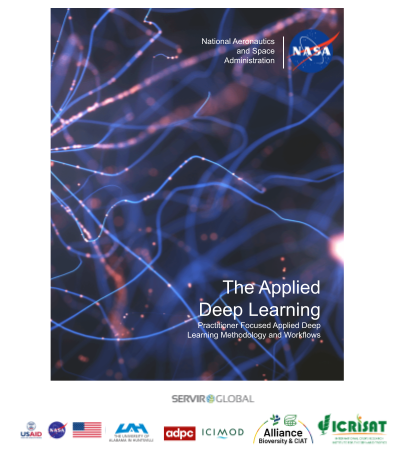SERVIR’s Applied Deep Learning Handbook
Introduction

The SERVIR program which is a partnership of NASA, USAID, and leading technical organizations striving to strengthens the capacity of countries in Asia, Africa, and the Americas to use satellite data and geospatial technology to address critical challenges in weather & climate resilience, agriculture and food security, ecosystem and carbon management, water security, disasters, as well as air quality and health. SERVIR co-develops innovative solutions through a network of regional hubs to improve resilience and sustainable resource management at local, national, and regional scales. Additionally, SERVIR focuses on developing participate in innovative knowledge products such as the SAR Handbook Flores-Anderson et al. (2019) and the GEE book Cardille et al. (2023) designed to support capacity building in applying Remote Sensing and geospatial approaches to address challenges.
The focus of the SERVIR Applied Deep Learning Book is to provide practitioners with a wide variety of applied examples of Remote Sensing Deep Learning approaches. With each chapter focusing on a specific problem set such as object detection of downscaling using Deep Learning. Additionally, throughout the books chapters various examples are provided spanning the aforementioned SERVIR thematic areas. Thereby providing a wide variety of thematic applications to complement reader’s domain specific practical knowledge such as agronomy or forestry etc.
We suspect readers are coming to this virtual book with preexisting geospatial expertise. However, limited Deep Learning knowledge and application specifically around environmental and Remote Sensing oriented challenges. We welcome readers to review the initial chapter on data preparation before progressing towards chapters with focused on specific problem sets or thematic use cases.
Each chapter contains both the theoretical background as well as a practical hand-on section facilitated through virtual notebooks. Finally, this book spans a variety of platforms such as TensorFlow and PyTorch to provide readers with a wide set of examples.